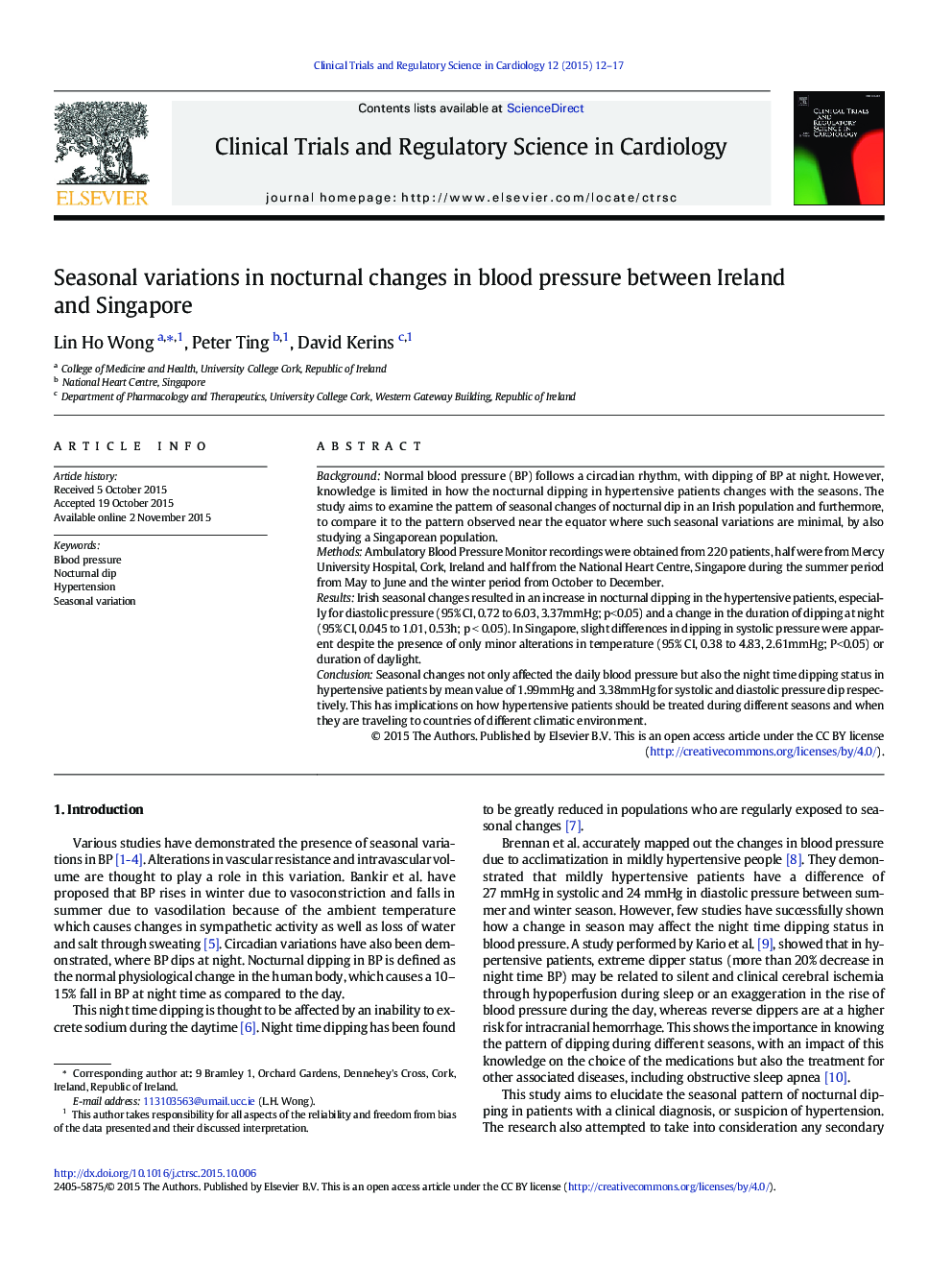| Article ID | Journal | Published Year | Pages | File Type |
|---|---|---|---|---|
| 2498649 | Clinical Trials and Regulatory Science in Cardiology | 2015 | 6 Pages |
BackgroundNormal blood pressure (BP) follows a circadian rhythm, with dipping of BP at night. However, knowledge is limited in how the nocturnal dipping in hypertensive patients changes with the seasons. The study aims to examine the pattern of seasonal changes of nocturnal dip in an Irish population and furthermore, to compare it to the pattern observed near the equator where such seasonal variations are minimal, by also studying a Singaporean population.MethodsAmbulatory Blood Pressure Monitor recordings were obtained from 220 patients, half were from Mercy University Hospital, Cork, Ireland and half from the National Heart Centre, Singapore during the summer period from May to June and the winter period from October to December.ResultsIrish seasonal changes resulted in an increase in nocturnal dipping in the hypertensive patients, especially for diastolic pressure (95% CI, 0.72 to 6.03, 3.37mmHg; p<0.05) and a change in the duration of dipping at night (95% CI, 0.045 to 1.01, 0.53h; p < 0.05). In Singapore, slight differences in dipping in systolic pressure were apparent despite the presence of only minor alterations in temperature (95% CI, 0.38 to 4.83, 2.61mmHg; P<0.05) or duration of daylight.ConclusionSeasonal changes not only affected the daily blood pressure but also the night time dipping status in hypertensive patients by mean value of 1.99mmHg and 3.38mmHg for systolic and diastolic pressure dip respectively. This has implications on how hypertensive patients should be treated during different seasons and when they are traveling to countries of different climatic environment.
